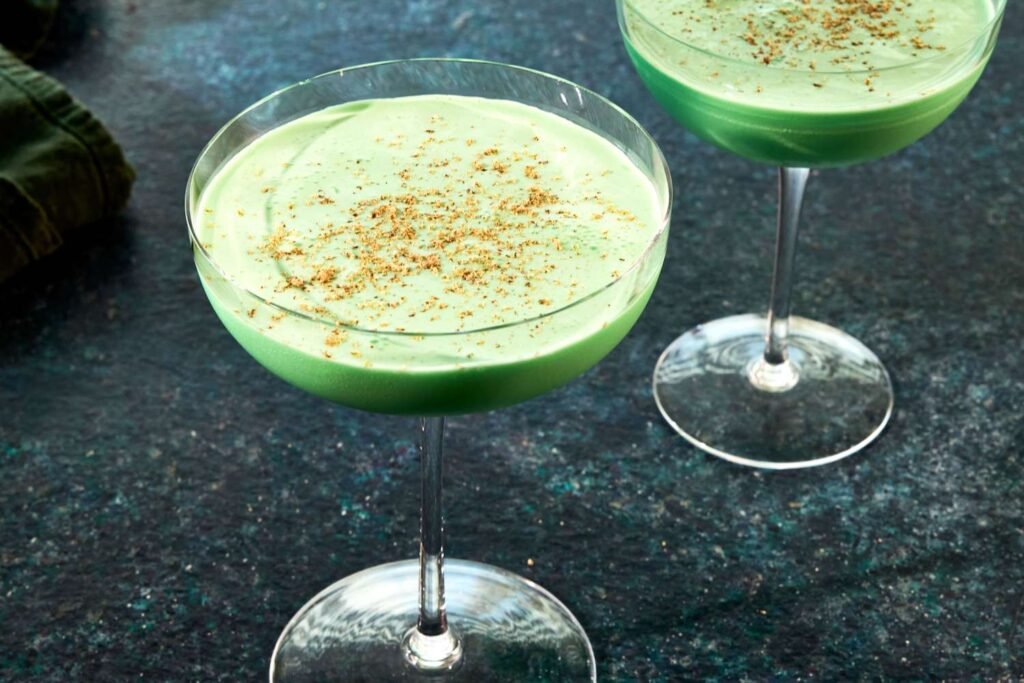The Grasshopper is a classic sweet and creamy cocktail, reminiscent of melted mint chocolate chip ice cream, that features crème de menthe, white crème de cacao, and heavy cream. The recipe is traditionally made of equal parts, but we’ve increased the portion of heavy cream for balance in this variation from veteran bartender Dale DeGroff.
A cocktail combining crème de menthe and white crème de cacao in equal parts appears as early as 1908, featured in a later edition of William “Cocktail Bill” Boothby’s cocktail manual World’s Drinks and How to Mix Them. This variation without cream was considered a pousse-café, a multi-layered liqueur cocktail, and, according to The Oxford Companion to Spirits & Cocktails, continued to show up in various bartending guides through the 1930s.
The seafoam-hued dessert-in-a-glass is most commonly attributed to historic New Orleans’ restaurant, Tujague’s. The French Quarter institution, which opened in 1856, claims to have introduced the drink to the world when, in 1918, its owner Philip Guichet created the cocktail for a New York City cocktail competition. The drink supposedly came in second place but was brought back to Tujague’s and remained a celebrated bar favorite from 1919 on.
Prohibition in the United States, which started in 1920 and lasted until 1933, had a devastating effect on the bar industry and cocktail culture. The Grasshopper suffered the same fate as many classic drinks created in the early 20th century, and nearly disappeared.
In the 1950s, postwar entertaining culture saw a shift toward drinks that were sweet, creamy, and colorful. The supper clubs of the mid-century helped to promote cream-based dessert drinks such as the Pink Squirrel and Brandy Alexander, as well as the Grasshopper. The drink saw another surge in popularity in the 1970s, when other sweet, disco-era drinks came to prominence.
Why the Grasshopper works
Though the traditional build for a Grasshopper is most often made in equal parts, two different sweet liqueurs together can overpower the drink and come off particularly cloying. By increasing the proportion of heavy cream, the cocktail’s texture becomes more luscious, sweetness is tempered, and balance is restored.
The drinkable dessert has more complex layers than one might expect.
Crème de menthe, originally developed as a digestif by French pharmacist Émile Giffard in 1885, is a colorless liqueur made by steeping Corsican mint or peppermint in grain alcohol. The concentrated, sweet mint flavors of the liqueur supply the Grasshopper with bright, herbal top notes while the crème de cacao, a style of clear chocolate liqueur with roots in 16th-century France, provides the drink with deep, rich base notes of cocoa.
A garnish of fresh mint or grated chocolate is commonly added to a Grasshopper. This variation calls for freshly grated nutmeg, adding warm, nutty aromatics, a perfect way to winterize this luxurious classic.


